Key takeaways:
- The implementation of IoT in agriculture significantly optimizes resource usage, enhances yield prediction, and empowers data-driven decision-making, leading to more sustainable farming practices.
- Despite challenges such as connectivity issues and high initial costs, the successful integration of IoT technologies has transformed traditional farming approaches and improved operational efficiencies.
- Future trends in agricultural IoT, including advancements in AI, blockchain for supply chain transparency, and enhanced connectivity with 5G, promise to revolutionize farming by enabling real-time data analysis and improved consumer trust.
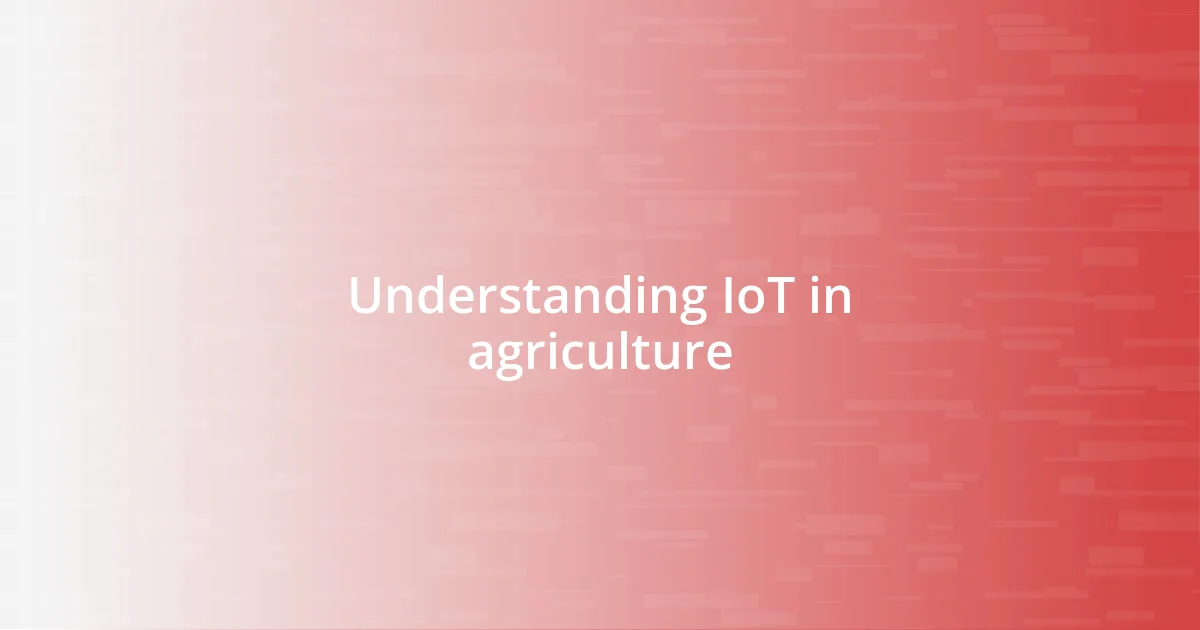
Understanding IoT in agriculture
Understanding IoT in agriculture fundamentally changes how we perceive farming. I’ve experienced firsthand the thrill of witnessing sensors collect real-time data, which can predict weather conditions and soil moisture levels. Isn’t it fascinating how technology can amplify the age-old art of farming, making it smarter and more efficient?
When I first implemented IoT solutions on my own farm, I felt a wave of apprehension mixed with excitement. Would these devices actually make a difference? That very first season taught me that the precision agriculture benefits of IoT aren’t just theoretical; they offer tangible results, from maximizing yield to conserving water—issues that weighed heavily on my mind before.
Reflecting on this journey, I often wonder how many farmers remain unaware of the potential hidden in IoT technology. The connection between devices like drones, soil sensors, and weather stations is remarkable. It brings a sort of synergy to agricultural practices that can ultimately lead to a more sustainable and productive future. I can’t help but feel optimistic about the transformations occurring within our fields.
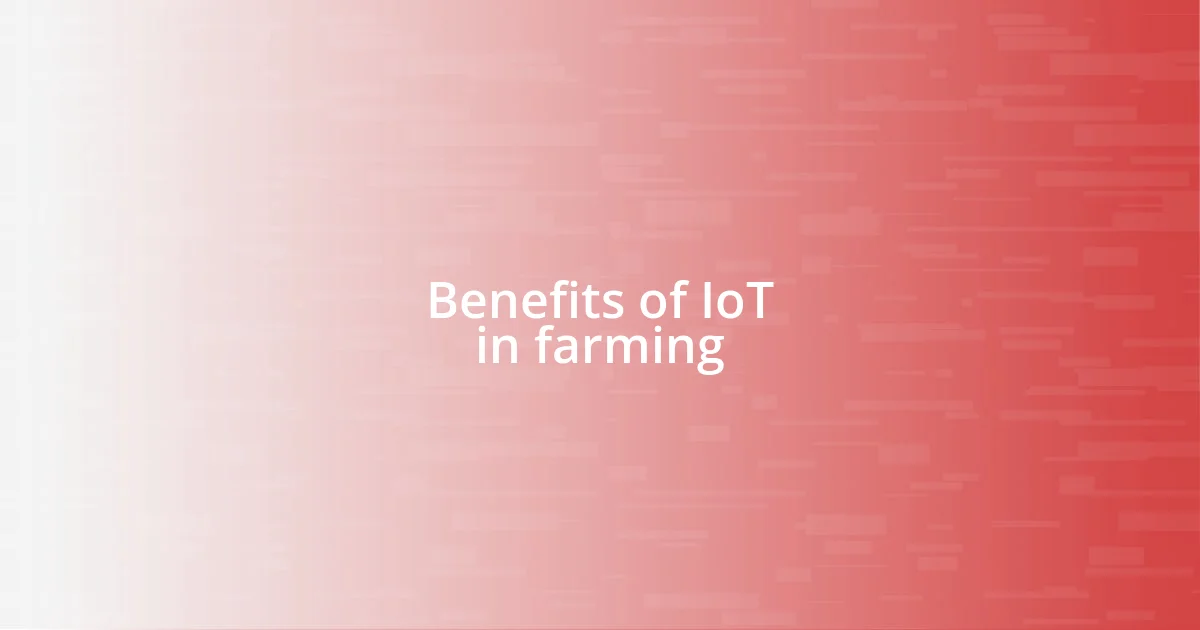
Benefits of IoT in farming
One of the most exciting benefits of IoT in farming is its ability to optimize resource usage. When I began using connected irrigation systems, the improvement was almost instantaneous. By assessing soil moisture levels and weather forecasts, I was able to reduce water waste significantly—something I never anticipated could happen so quickly.
Moreover, IoT devices enhance yield prediction and crop management. I remember the moment I received alerts on disease risks via my farm management app. It not only saved me time but also reduced chemical usage, leading to both healthier crops and a smaller environmental footprint. That experience underscored to me how proactive measures, powered by real-time data, can create a positive cycle of benefits for both the farmer and the ecosystem.
Another profound impact has been increased decision-making based on data-driven insights. After establishing a network of sensors on my fields, I found myself making more informed choices about when to plant or harvest. I felt empowered knowing I had tangible data, guiding my decisions instead of relying solely on intuition. This shift transformed my approach to farming, cementing the idea that technology and tradition could harmoniously coexist in agriculture.
| Benefit | Description |
|---|---|
| Resource Optimization | Reduces water waste through connected irrigation systems. |
| Yield Prediction | Improves crop management with alerts on disease risks. |
| Informed Decision-Making | Empowers farmers with data-driven insights for planting and harvesting. |
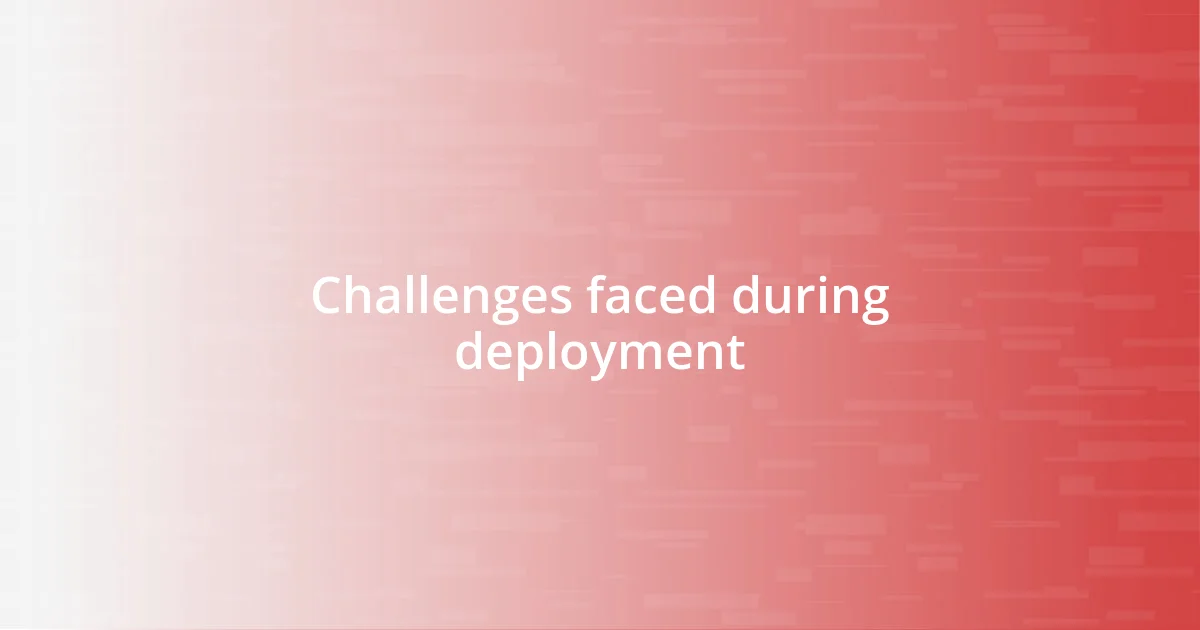
Challenges faced during deployment
Deploying IoT technology in agriculture was far from a smooth ride; I encountered numerous obstacles along the way. The initial hurdle was ensuring strong connectivity across my fields. I vividly remember one incident where a sensor lost its connection on an important watering day, leading to parched plants. This experience really opened my eyes to the necessity of reliable communication networks for IoT devices.
Some of the challenges I faced include:
- Connectivity Issues: Inconsistent signal strength in remote areas disrupted data transmission.
- High Initial Costs: Implementing advanced IoT systems required significant upfront investment.
- Data Overload: I often found myself grappling with an overwhelming amount of data, making it hard to identify key insights.
- Maintenance and Upkeep: Regular maintenance of devices was more demanding than I anticipated.
- Tech Familiarity: Not all team members were comfortable with new tech, requiring additional training.
Despite these challenges, they pushed me to adapt and refine my approach, ultimately leading to a more resilient implementation strategy.
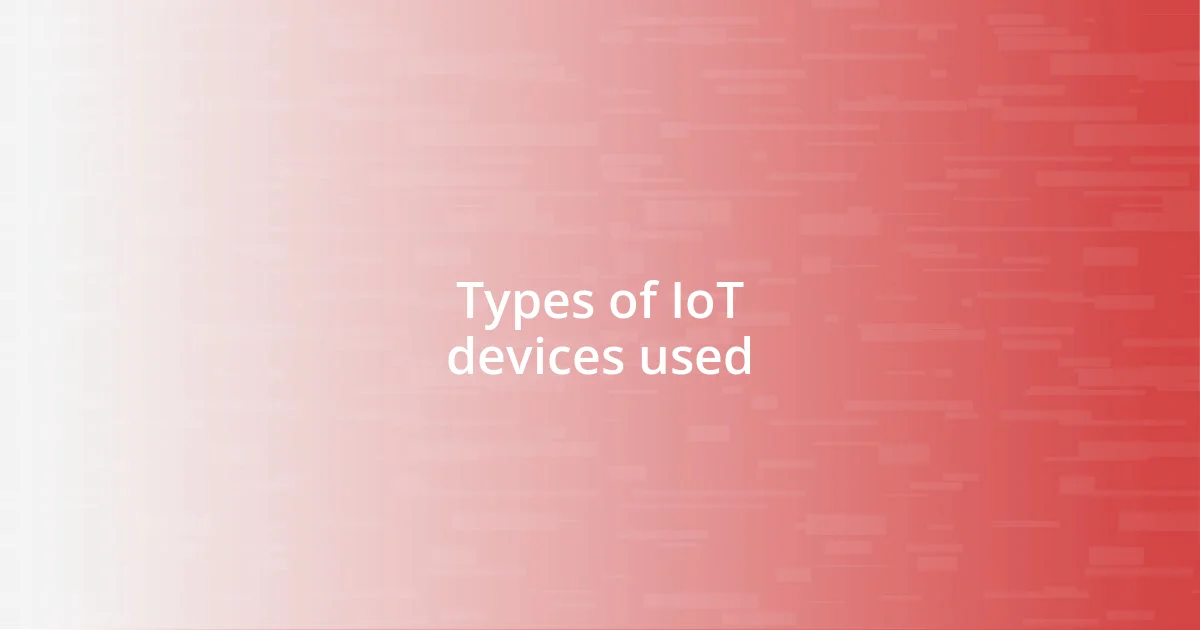
Types of IoT devices used
When it comes to IoT devices in agriculture, there are several types that truly can transform the way we farm. The most common ones I’ve worked with are soil moisture sensors. These little devices have been a game-changer for my irrigation practices. Imagine walking through your fields and getting real-time feedback on exactly how thirsty your plants are! It’s like having a personal assistant who tells you when it’s time to water. Doesn’t that sound satisfying?
Then there are climate sensors, which provide invaluable data about temperature, humidity, and air pressure. I remember installing one in a particularly tricky greenhouse. The insights I received were eye-opening—like suddenly realizing I was running an indoor sauna during the hottest parts of the day! This information allowed me to make precise adjustments, ultimately helping me maintain an optimal growing environment. Who knew a small device could lead to such a significant impact on my yields?
Lastly, let’s not forget about smart tractors and drones. These devices have literally changed the way I approach fieldwork. Drones allow me to monitor crop health from the sky, while smart tractors can optimize planting patterns based on data analysis. In one instance, my drone captured imagery that revealed nutrient deficiencies I hadn’t noticed from the ground. That moment made me appreciate how much technology had advanced and how critical it is to integrate these tools into our farming routine. Isn’t it fascinating how much more we can achieve with the right devices in hand?
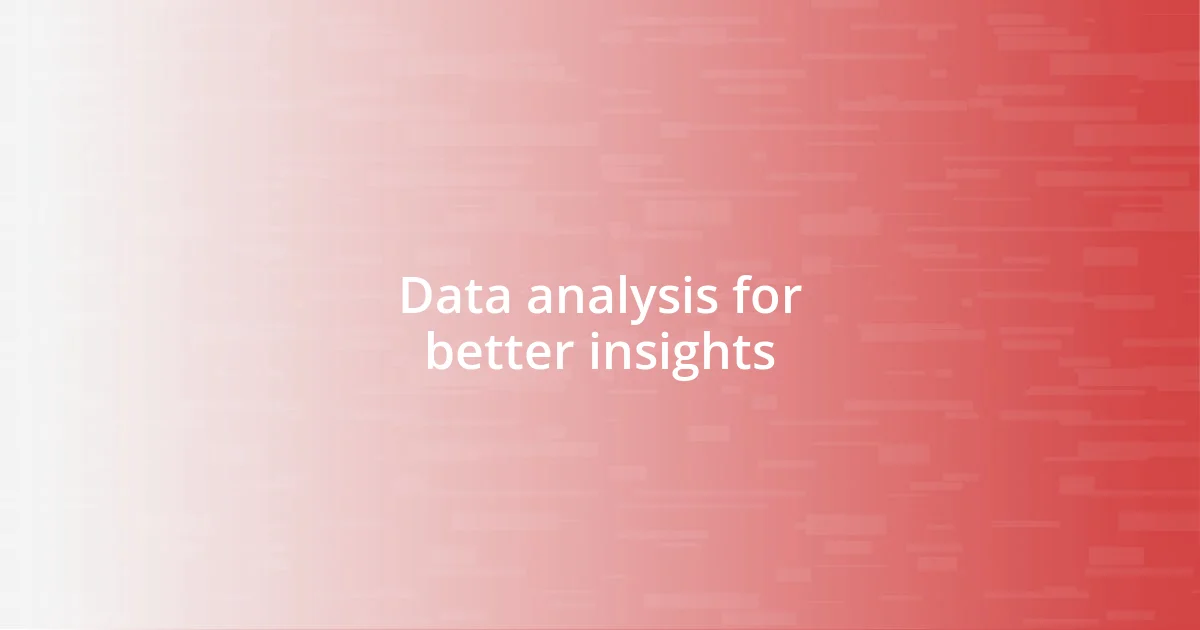
Data analysis for better insights
Analyzing data collected from IoT devices has truly transformed my approach to farming. Initially, I was overwhelmed by the sheer volume of information, feeling like a kid lost in a candy store. But as I started pinpointing specific insights, I realized just how powerful this data could be. For instance, after tracking soil moisture levels over time, I could accurately adjust my irrigation schedules and significantly reduce water waste. Who knew that being data-driven could lead to such a self-sustaining approach?
I remember a moment when I discovered patterns in pest activity through my connected sensors. By analyzing the timestamps and conditions related to pest outbreaks, I gained predictive insights that allowed me to implement preventive measures. Instead of reacting to problems as they arose, I became proactive, which made me feel like I was finally in control. Isn’t that the goal we all strive for in agriculture?
Furthermore, I found that visualizing this data on user-friendly dashboards made all the difference. It turned what felt like a mountain of numbers into a clear and actionable story. Sharing these insights with my team also lifted their spirits; suddenly, everyone was looking forward to data discussions rather than feeling bogged down by potential confusion. That collaborative spirit has driven us all to achieve better results together, which makes farming not only more efficient but also a lot more enjoyable. How could I have navigated this journey without leaning into the power of data analysis?
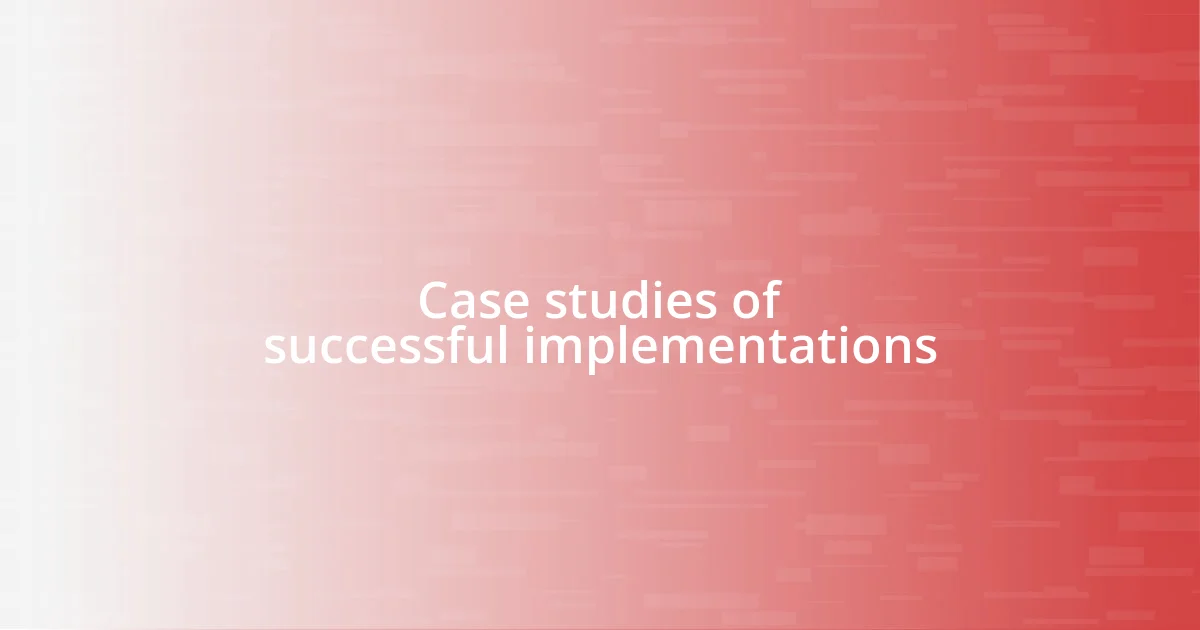
Case studies of successful implementations
One compelling case study I encountered was with a neighboring farm that implemented a comprehensive IoT system to monitor crop health. They integrated satellite imagery with ground sensors to create a layered understanding of their fields. I remember visiting and seeing firsthand how they adjusted nutrient applications based on real-time data, leading to a stunning 20% increase in yield. Isn’t it incredible how technology can open new doors for traditional practices?
Another impressive example I noticed involved a vineyard using IoT technology to monitor grape ripeness via moisture sensors and weather forecasts. They were able to determine the optimal harvest time more accurately than ever before. Watching the vineyard manager share her excitement about harvesting her best grapes yet was inspiring. Could this kind of precision be the future of winemaking?
I also admire a farm that adopted livestock tracking devices to improve herd management. By equipping animals with collar sensors, they monitored health and location, which significantly reduced losses due to disease. Sharing a coffee with the farmer and hearing him express his relief at minimizing stress on his livestock made me realize the emotional benefit of these technological advancements. Isn’t it rewarding when technology not only boosts productivity but also enhances animal welfare?
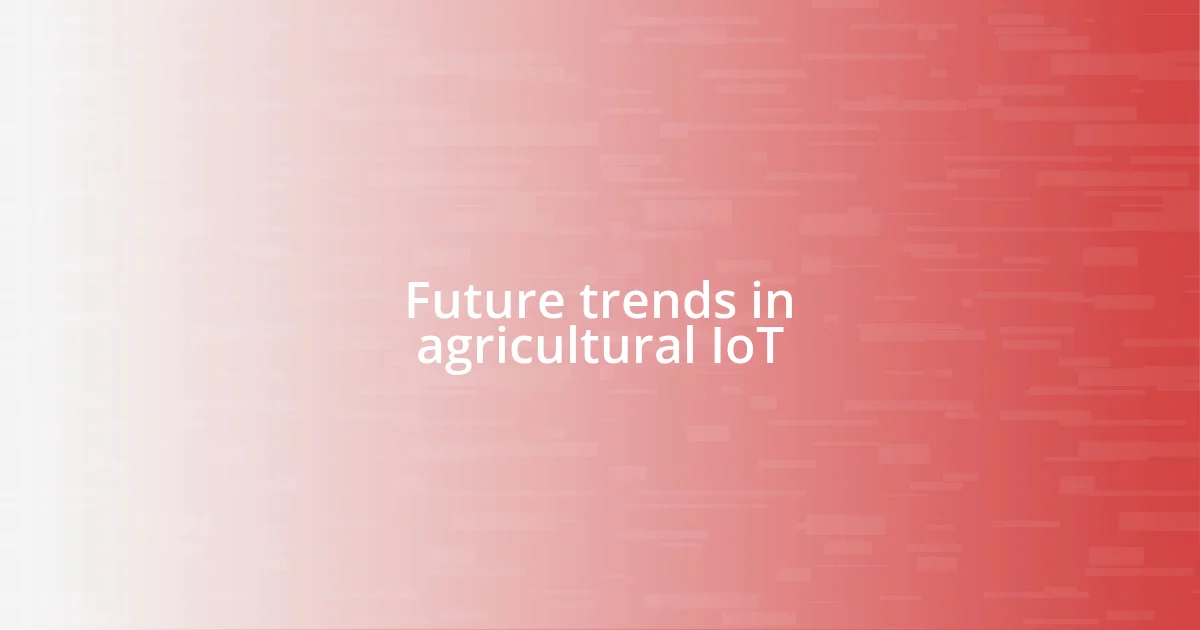
Future trends in agricultural IoT
As I reflect on the evolution of agricultural IoT, I can’t help but feel excited about the rise of artificial intelligence and machine learning. Imagine a future where these technologies analyze vast amounts of on-field data directly in real-time, predicting not just weather patterns but also optimizing planting schedules. Could this level of foresight really revolutionize how we grow crops? It certainly seems possible, and I can envision how it might finally bring together various farming methods into a cohesive strategy.
It’s not just AI that has me buzzing with anticipation; the potential of blockchain for supply chain transparency is equally thrilling. Tracking every decision and movement from farm to table could ensure food safety like never before. Knowing I could provide my customers with complete visibility into how their food was produced brings a sense of pride and accountability that is hard to quantify. Have you ever considered how much trust consumers would place in knowing their food’s entire journey?
Moreover, with advancements in connectivity—especially with the development of 5G technology—there’s potential for seamless communication among IoT devices in vast agricultural settings. I picture farms where drones, soil sensors, and weather stations all communicate fluidly, allowing for a truly connected agricultural ecosystem. It makes me wonder: will we look back one day and think how primitive our current methods were? The future certainly feels like it’s bursting with possibilities, and I’m eager to dive deeper into this brave new world.













